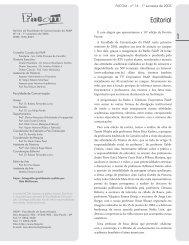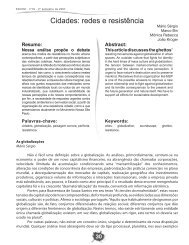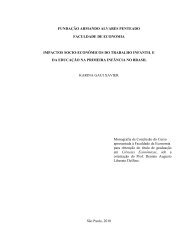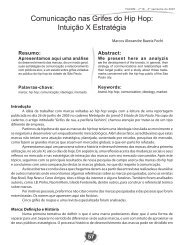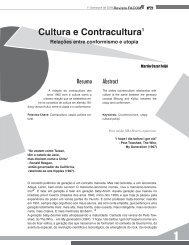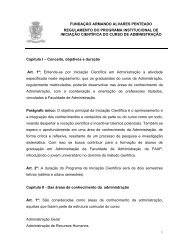Revista Economia n. 13.pmd - Faap
Revista Economia n. 13.pmd - Faap
Revista Economia n. 13.pmd - Faap
Create successful ePaper yourself
Turn your PDF publications into a flip-book with our unique Google optimized e-Paper software.
parliament and universal suffrage was introduced. From 1906 on, every Finnish<br />
citizen over 24 years of age had the right to vote in the parliamentary elections<br />
and be eligible to become elected to the eduskunta (Parliament). Thus, Finland<br />
was the first country in the world where women received full political rights.<br />
It is difficult to imagine that without the parliamentary reform, Finland<br />
would have been able to create the groundwork for political independence in<br />
1917. Its declaration was, of course, also spurred by the Bolshevik revolution<br />
that permitted Finland to cede from the Russian empire (to which it was expected<br />
to return after the socialist revolution in Finland). On the other hand, the Russian<br />
events had negative political repercussions in Finland. Political forces were<br />
mobilized to an unprecedented degree and the antagonism between social classes<br />
grew more intense. The unequal pattern in the landownership, especially in<br />
Southern Finland, and a deteriorating food situation, with the progress of the<br />
world war, instigated discontent and rebellion. Both the socialists and bourgeois<br />
forces had established their own militias which armed themselves and developed<br />
into proto-military organizations. The control of the Czarist authorities collapsed<br />
in Finland in 1917 when the country had not been yet able to establish an effective<br />
state machinery of its own. In these circumstances, a power vacuum emerged<br />
and power was growing out of the barrel of gun. The civil war started in January<br />
1918 between the so-called Reds and it lasted until May 1918 when the Whites<br />
defeated, with the help of the German intervention, the socialist opposition.<br />
The Finnish civil war was short by international standards, but its aftermath,<br />
with large-scale executions and disease in the prison camps, led to the deaths of<br />
some 38,000 people, the large majority of them being Reds. The civil war left<br />
deep scars in the Finnish society and their impact is felt even today. In fact,<br />
during the last few years a lot of new research has appeared in Finland to<br />
document the horrors of that war. Politically, the working class movement was<br />
divided between the Social Democrats and the Communists, who had to operate<br />
from the Soviet Union as the party was banned in Finland (and who suffered<br />
grievously in Stalin’s purges of the 1930s).<br />
The key task in the newly independent country was to consolidate its<br />
sovereignty, especially in relation to the Soviet Russia and Sweden (which<br />
demanded the Aaland Islands that were given, however, to Finland by a decision<br />
of the League of Nations). In the 1920s and the 1930s, Finland’s domestic<br />
politics was unstable and the country was ruled mostly by short-lived bourgeoisie<br />
coalitions. There were also right-wing movements which had expansionist designs<br />
towards the Soviet territories where Finnish-related ethnic groups were living.<br />
However, there was at no point in the interwar era any strong Fascist mass<br />
organization as there was in Germany and Italy.<br />
After the Great Depression of the early 1930s was finally over, Finnish<br />
development prospects became brighter. The new coalition between the Social<br />
Democrats and the Agrarian Union brought stability to the political life and<br />
economic growth accelerated significantly. Agriculture remained the mainstay<br />
of the economy, but both the paper and metal industry were growing quickly<br />
and provided new employment in the mills.<br />
Ninety years of Finland’s independence: transition from the periphery..., Raimo Väyrynen, p. 134-146<br />
137






